Buy or gift a stand-alone digital subscription and get unlimited access to dozens of back issues for just £18.99 / $18.99 a year.
Please register at www.exacteditions.com/digital/cornucopia with your subscriber account number or contact subscriptions@cornucopia.net
Buy a digital subscription Go to the Digital EditionThe war of 1853–56 was a calamitous clash of imperial ambitions. Turkey sustained heavy losses, but without them she might have ceased to exist. David Barchard puts the conflict in context
B etween 1768 and 1878, Russia and Turkey went to war six times as successive waves of Russian military expansion dismembered the Ottoman Empire. The Ottomans lost Crimea and the northern coast of the Black Sea, then much of the Caucasus, the Danube, and eventually its Balkan possessions. Most 19th-century observers assumed Turkey would ultimately be swallowed up in the Russian Empire, like the Emirates of Central Asia and the Caucasian provinces of Iran, and would disappear from the map and history.
But it never happened. In the middle of the 19th century the Crimean War dealt Russia a blow that set it and its expansionary hopes back many years. And this happened because on this one occasion, unlike all the other wars, Turkey fought not alone but with Britain, France and Piedmont as its allies.
By 1850 Russian hopes of turning Turkey into a protectorate ran high. Had Russia succeeded, it would probably have displaced Britain as the strongest international power. Fear of Russian expansion was almost an obsession among some British policy-makers, including Lord Palmerston and his loyal supporter Sir Stratford Canning, the British ambassador in Constantinople. Canning had spent most of the previous 20 years encouraging reform in Turkey so that it could resist Russia more effectively. The Russians discouraged change, supporting the traditionalists and anti-reformists at the Ottoman court. One Turkish ambassador was told by the Tsar that the Turks should not bother to learn European languages. Canning was also a long-standing friend and (at least in his own eyes) mentor of the principal Turkish statesman and leading reformist, Mustafa Reşit Pasha.
In the first half of 1853 the Russians ratcheted up their demands on Turkey, inexorably trying to chip away its independence. Canning and Mustafa Reşit worked closely to steer events towards a point where Britain would intervene – not an easy task since the British prime minister, Lord Aberdeen, known to his friends as “Athenian Aberdeen”, was essentially pro-Russian. Indeed the Russians had tried to neutralise British opposition by offering them a deal in January 1853 in which the two countries would have partitioned the Ottoman Empire between them, disposing of the possessions of the “sick man of Europe”. Britain refused. Had the partition happened, world history might have been very different, for in 1853, unlike 1919, Turks and Muslims were less demographically dominant in Anatolia than they later became.
By October the Ottoman–Russian confrontation had moved from diplomacy to war, which was declared on October 23. Turkey was still alone, but on November 30 Ottoman ships in port at Sinop were destroyed by the Russians, and Britain and France, fearful of a Turkish collapse, decided to go to war, though it was not formally declared until the end of March the following year. A spate of “Help the Turk” memorabilia appeared on sale in England,
‘Ottoman Lives’, by David Barchard, is due out later this year. He was one of the contributors to the Sadberk Hanım exhibition catalogue, [150th Anniversary of the Crimean War]
Yevpatoria in Crimea was the home the young Anna Akhmatova, an icon of Russian literature, who fell foul of Stalin
Like many writers, Chekhov made his way to Crimea to nurse his TB in a milder climate. His two houses, now museums, became magnets for artists. One he left to his sister, the other to his wife.
By any standard, Hüsamettin Koçan’s mountain-top Baksı Museum, in the northeastern Anatolian village where he was born, deserves a place among the world’s top ten remote museums.
Philip Mansel on the future Edward VII’s Ottoman expedition
This silver goblet was one of more than 600 medieval treasures from Central Asia crowding Bonhams’ elegant rooms in Edinburgh for six days in January.
Thomas Whittemore, the American scholar and philanthropist, was instrumental in restoring the Byzantine treasures of Ayasofya. Robert S Nelson delves into his enigmatic life
Mulberries come in an array of hues: black, white, pink, purple; some enticingly sweet, others astringent and healing. As Berrin Torolsan can testify, having grown up with them in her Istanbul garden, all are adored – by man, mallard and pine marten alike. Here she traces the history of this lucious fruit
From the towers of Tatary to the tombs of Scythian kings, from clifftop citadels to an underground castle, from Balaklava to the beaches of the Tsarist Riviera, Crimea is a land to fall in love with, waiting to be enjoyed, not destroyed
The V&A’s Tim Stanley eyes up the Louvre’s astonishing new Islamic offering
Aard Streefland tells the story of the Dutch orientalist Marius Bauer (1867–1932)
As the Sadberk Hanım Museum celebrates the art of embroidery, Min Hogg marvels at the motifs of palaces, fruit and flowers, sea and cityscape, wrought stitch by stitch, to adorn every Ottoman home
The Crimean khans founded their capital in the fertile foothills of the Crimean Mountains in the 15th century. This was the nucleaus of the land known as Cim Tartary. The garden palace of Bahçesaray is a glorious reminder of the khans’ 350-year reign
Dramatic and picturesque, Crimea’s southern coast became a resort for doomed royalty and a refuge for ailing literati
Two ports – Sevastopol and Yevpatoria – rule Crimea’s flat west coast. One was built for war, the other for recreation. Both played a part in the Crimean War
Geonese merchants, a millionaire painter and a symbolist poet brought fortune and fame to the eastern stretches of Crimea’s south coast and its fertile hinterland
Balaklava, Sevastopol, Inkerman, the Valley of Death – in Britain, where the savage toll was so acutely felt, these names still have the power to arouse pride and fury. Algernon Percy travelled to Crimea to visit the evocative battlefields
From the Danube to the Caucasus, conflict raged. The Ottomans were fighting for their territories and their lives, but the full story of their courage is only now being told, says the military historian Mesut Uyar
With its healing brine baths and golden beaches, its wealth and variety of architecture, and its layers-deep history, this resort offers something for everyone – from hedonist to hypochondriac
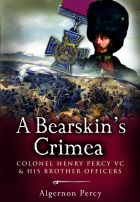
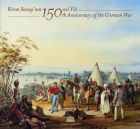
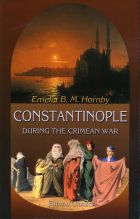
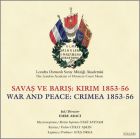
The London Academy of Ottoman Court Music, with Emre Araci
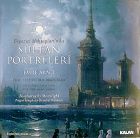
The Prague Symphony Chamber Orchestra with Cihat Askin, violin. Directed by Emre Araci and produced by Ateş Orga

Cornucopia works in partnership with the digital publishing platform Exact Editions to offer individual and institutional subscribers unlimited access to a searchable archive of fascinating back issues and every newly published issue. The digital edition of Cornucopia is available cross-platform on web, iOS and Android and offers a comprehensive search function, allowing the title’s cultural content to be delved into at the touch of a button.
Digital Subscription: £18.99 / $18.99 (1 year)
Subscribe now